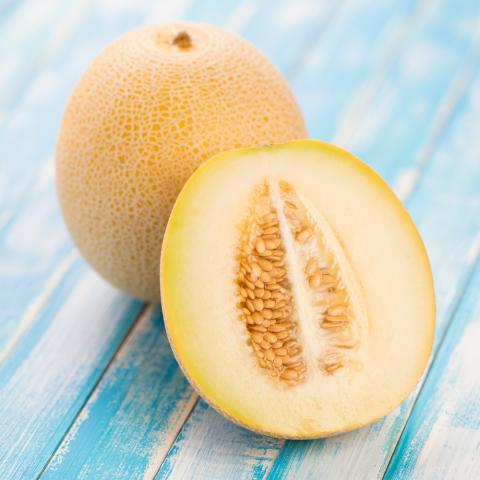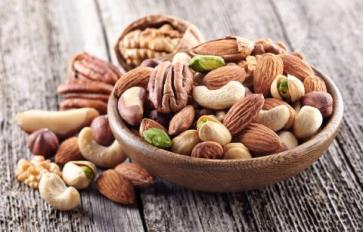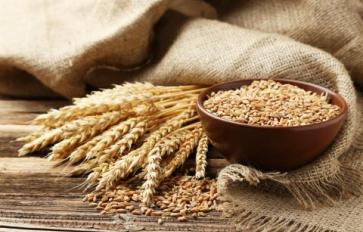
Galia melon is a member of the family Cucurbitaceae and is a hybrid of the muskmelon. The plant was developed in Israel at the Ne´ve Yaar Research Center of the Agricultural Research Organization in the 1960s by melon breeder Dr. Zvi Karchi and was ready for commercial production in 1973. Within ten years it gained popularity throughout western Europe.
Morocco, Turkey, and Spain are currently the major producers of the melon which is grown in Central America, Egypt, Portugal, Greece, and Brazil. Recently, Florida has begun growing galia melons in greenhouses. They are a cross between honeydew and cantaloupe type melons and are closely related to Ogen melons; they are commonly served with cold meats. Galia melons are a nutrient rich fruit with many health benefits. They are not only a healthy snack but are an excellent ingredient in salad recipes and have a high water content.
Galia melons have a netted outer skin with a yellow to orange hue. The flesh has a pale green color with a succulent texture and a spicy sweet flavor that is a combination of perfume and tropical aromas. The ripeness of the fruit is determined by its color and scent; it is ripe when the hue is more orange than yellow and the aroma becomes musky, indicating a high sugar content of the melon. Galia melons weigh from two to three pounds when ripe.
Health Benefits of Galia Melons
Galia melons are rich in nutrients. They contain high levels of vitamin C, bioflavinoids, and vitamin A (including carotenoids). They are rich in minerals such as potassium, calcium, and iron. Other nutritious benefits that are found in galia melons are fiber and pectin.
Galia melons help to protect the body from cardiovascular diseases because of their high content of fiber and potassium. The fiber reduces the presence of LDL cholesterol, preventing the developing atherosclerosis. The potassium regulates blood pressure, reducing the risk of heart attacks and strokes. The high fiber content of the fruit also aids digestion by bulking the stool, which eliminates constipation and gastrointestinal maladies. The fiber also adds bulk to the diet, which has a filling effect that helps to reduce the amount of food intake, aiding in weight loss.
Galia melons are an excellent source of vitamin A, which is conducive to ocular health. This vitamin contains carotenoids and beta-carotene, protecting the eye from ocular damage due to UV-radiation and diseases like macular degeneration and cataracts. The fruit also contains pectin, a substance that prevents the development of diabetes by transforming simple sugars and carbohydrates into glucose, regulating sugar levels in the blood stream; this means that it reduces the extreme levels of sugar in the blood from spiking and dropping.
Other health benefits of galia melons include the presence of cancer-preventing enzymes like carotenoids, which eliminate the free radicals that are the basic cause of cancer development. The fruit is also an energy booster, containing vitamin B which is necessary to process carbohydrates. Another benefit of galia melon is that it contains diuretic properties that are conducive to kidney function, resulting in the reduction of the inflammation caused by gout and the development of kidney diseases.
Growing Galia Melons
Growing galia melons takes specific procedures. Because they were developed in a desert climate they do not do well in tropical or subtropical conditions. They must be protected from rainfall during their maturation period because if too much moisture is absorbed at this time in their growth it effects the sweetness of the mature melon. They must ripen on the vine to maintain their flavor. They have less of a yield when grown in the field and it has been shown that they are a greenhouse plant needing a substitute soil known as perlite which is a product of crushed volcanic rock. Because of the particular growing requirements of the plant it is an expensive product.








